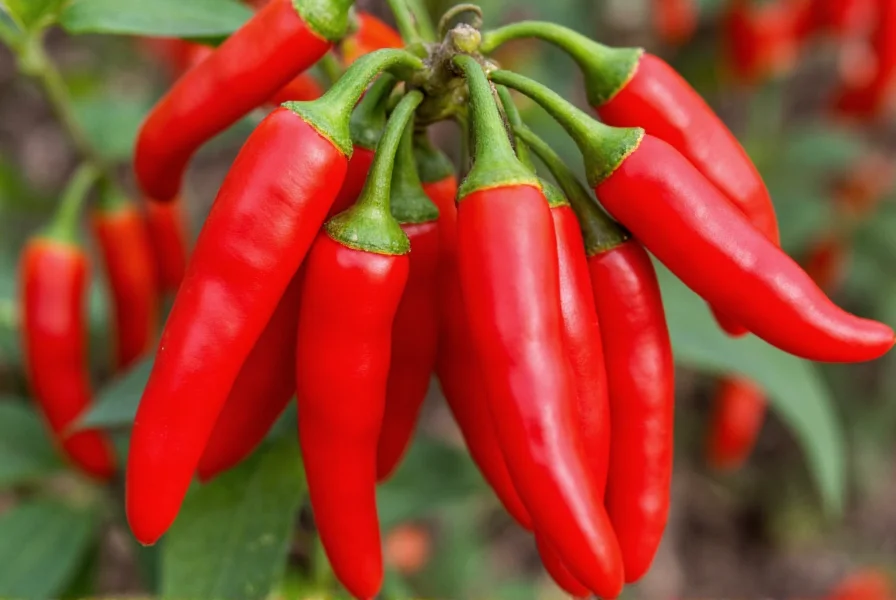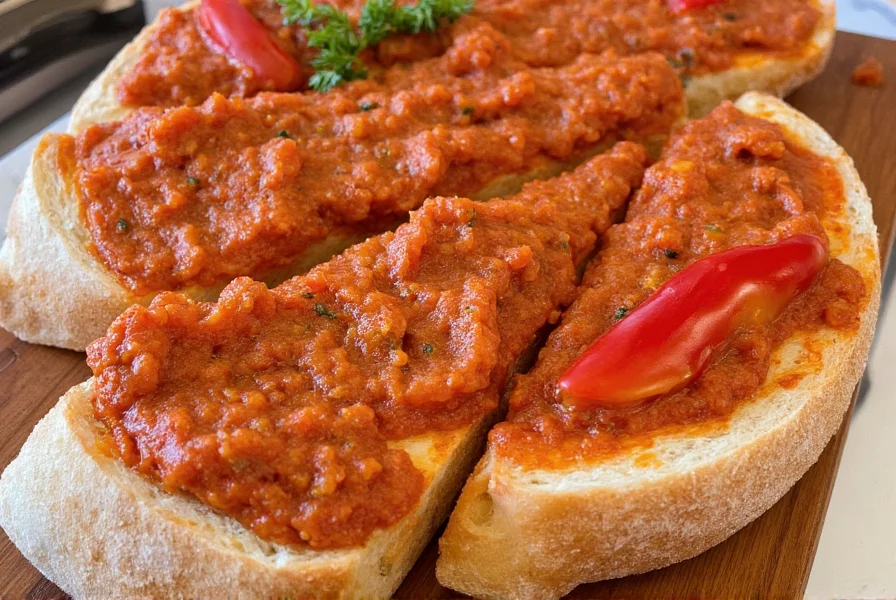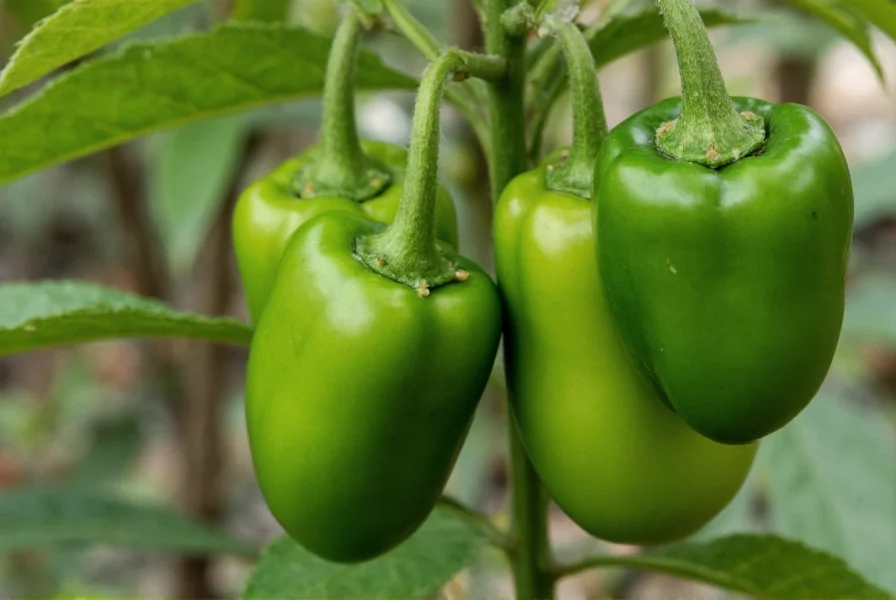When exploring Italian regional peppers, few varieties capture the essence of southern Italy quite like the Calabrese pepper. This distinctive chili has been cultivated for centuries in the sun-drenched region of Calabria, where it's deeply woven into the culinary fabric. Unlike generic red pepper flakes found worldwide, authentic Calabrese peppers offer a complex flavor profile that balances moderate heat with subtle fruity notes and earthy undertones.
Origin and Cultural Significance
The Calabrese pepper's story begins in the rugged terrain of Calabria, the "toe" of Italy's boot-shaped peninsula. Historical records suggest these peppers arrived in Italy through trade routes following Columbus's voyages to the Americas. Calabrian farmers quickly adopted them, selecting and cultivating varieties best suited to their Mediterranean climate and volcanic soils.
What makes Calabrese peppers culturally significant is their role in 'nduja, Calabria's famous spicy spread made from pork jowl, fat, and copious amounts of Calabrese peppers. This culinary tradition earned Presidio status from the Slow Food movement, recognizing its cultural importance and artisanal production methods. Families throughout Calabria still harvest and dry these peppers using time-honored techniques passed down through generations.
Physical Characteristics and Varieties
Calabrese peppers typically measure 2-4 inches in length with a slender, tapered shape that narrows to a distinctive point. Their smooth, glossy skin transitions from bright green to deep crimson as they mature. While most commonly associated with their vibrant red form, some heirloom varieties display striking purple or orange hues.
| Characteristic | Details |
|---|---|
| Scientific Name | Capsicum annuum 'Calabrese' |
| Heat Level | 15,000-30,000 SHU (moderate) |
| Flavor Profile | Fruity, earthy, with subtle smokiness |
| Common Forms | Fresh, dried, crushed, in oil, in 'nduja |
Two primary varieties dominate Calabrian production: the longer, thinner diacri and the slightly shorter, curved picci. The diacri variety tends to be hotter with more pronounced fruity notes, while picci offers a more balanced heat with earthier characteristics. Both varieties develop greater complexity when allowed to fully ripen to deep red before harvesting.
Flavor Profile and Heat Analysis
Understanding the Calabrese pepper's flavor requires moving beyond simple heat measurements. While registering 15,000-30,000 Scoville Heat Units places them significantly hotter than jalapeños (2,500-8,000 SHU) but milder than habaneros (100,000-350,000 SHU), their culinary value lies in their nuanced flavor profile.
When sampled fresh, Calabrese peppers deliver an initial bright, grassy note followed by building heat that peaks within 30 seconds. Unlike some chilies that produce a sharp, one-dimensional burn, Calabrese peppers offer a rounded heat that spreads across the palate while maintaining distinct fruity undertones. When dried and crushed, they develop subtle smoky notes that enhance their versatility in cooking.
Culinary Applications and Traditional Uses
The Calabrese pepper's true culinary significance emerges in traditional Calabrian preparations. Beyond the famous 'nduja, these peppers feature prominently in fileja al peperoncino (hand-rolled pasta with chili), peperoni cruschi (dried fried peppers served as snacks), and soppressata piccante (spicy salami).
Modern chefs worldwide have embraced Calabrese peppers for their ability to add both heat and flavor complexity without overwhelming other ingredients. Unlike generic red pepper flakes that primarily contribute heat, Calabrese peppers enhance dishes with their distinctive flavor profile. They work particularly well in:
- Seafood preparations (especially grilled octopus and swordfish)
- Tomato-based sauces where their fruitiness complements acidity
- Roasted vegetable dishes, particularly eggplant and peppers
- Infused oils for finishing dishes
- Marinades for meats, especially pork and lamb
Calabrese Pepper vs. Similar Varieties
Many shoppers confuse Calabrese peppers with other chili varieties. Understanding these distinctions helps select the right pepper for specific culinary applications:
- Peperoncini - Often mistaken for Calabrese, these are actually Tuscan peppers (friggitelli) with significantly milder heat (100-500 SHU) and a more vegetal flavor
- Jalapeños - Much milder (2,500-8,000 SHU) with a grassier flavor profile and thicker walls
- Cherry peppers - Sweeter and rounder, typically used for pickling rather than heat
- Crushed red pepper - Usually a blend of various chili types, often lacking the distinctive Calabrian flavor
The authentic Calabrese pepper's slender shape, tapered point, and balanced heat distinguish it from these alternatives. When shopping for Calabrese peppers, look for those labeled peperoncino calabrese or peperoncino di Calabria to ensure authenticity.
Selecting and Storing Calabrese Peppers
When selecting fresh Calabrese peppers, choose specimens with smooth, taut skin free from wrinkles or soft spots. The brightest red peppers typically offer the most developed flavor, though green Calabrese peppers provide a different culinary experience with more vegetal notes and slightly less heat.
For optimal storage:
- Fresh peppers - Store in a paper bag in the vegetable crisper for up to two weeks
- Dried peppers - Keep in airtight containers away from light and moisture for up to one year
- Crushed form - Store in dark glass containers to preserve flavor compounds
- 'Nduja - Refrigerate after opening and consume within 30 days
Many Calabrian households preserve their harvest through peperoni cruschi—drying the peppers completely then briefly frying them in olive oil until crisp. This traditional preservation method concentrates flavors while creating a versatile ingredient that can be crumbled over pasta or rehydrated for sauces.
Growing Calabrese Peppers
While Calabrese peppers thrive in their native Mediterranean climate, gardeners worldwide can successfully cultivate them with proper care. These peppers require:
- At least 6-8 hours of direct sunlight daily
- Well-draining soil with moderate fertility
- Consistent moisture without waterlogging
- Warm temperatures (70-85°F / 21-29°C) for optimal growth
Starting seeds indoors 8-10 weeks before the last frost date gives Calabrese peppers sufficient time to mature. The plants typically reach 18-24 inches in height and produce abundant fruit when properly cared for. Gardeners in cooler climates can grow Calabrese peppers successfully in containers that can be moved indoors during temperature extremes.

Authentic Calabrian Recipes Featuring Calabrese Peppers
Experiencing Calabrese peppers in their traditional context reveals their true culinary potential. Two signature preparations showcase their versatility:
'Nduja Preparation: This spreadable salume combines Calabrese peppers with pork jowl, fatback, and salt. The peppers' heat and flavor penetrate the pork during the curing process, creating a complex spread that melts at room temperature. Authentic 'nduja requires specific ratios of meat to peppers (typically 3:1) and a minimum 6-month curing period.
Peperoni Cruschi: This traditional preservation method involves drying Calabrese peppers completely, then briefly frying them in olive oil until crisp. The resulting crunchy peppers can be served as snacks, crumbled over pasta, or rehydrated for sauces. The frying process concentrates the peppers' natural sugars while developing subtle caramelized notes.

Where to Find Authentic Calabrese Products
As Calabrian cuisine gains global popularity, authentic Calabrese pepper products have become more widely available. Look for:
- Specialty Italian markets carrying products labeled DOP (Protected Designation of Origin)
- Reputable online retailers specializing in regional Italian ingredients
- Farmers' markets with vendors who specify Calabrian origin
- Brands that clearly identify the pepper variety and region of origin
Beware of products simply labeled "Calabrese" that may not contain authentic Calabrian peppers. True Calabrese pepper products will specify their Calabrian origin and often feature the distinctive slender shape in product photography.
Frequently Asked Questions
What is the difference between Calabrese peppers and regular red pepper flakes?
Authentic Calabrese peppers are a specific variety from Calabria, Italy, with a distinctive flavor profile beyond just heat. Regular red pepper flakes are typically a generic blend of various chili types that primarily provide heat without the nuanced fruity and earthy notes characteristic of true Calabrese peppers.
How hot are Calabrese peppers compared to other common chilies?
Calabrese peppers measure 15,000-30,000 Scoville Heat Units, making them significantly hotter than jalapeños (2,500-8,000 SHU) but milder than habaneros (100,000-350,000 SHU). Their heat builds gradually with complex flavor notes rather than delivering an immediate sharp burn.
Can I substitute Calabrese peppers in recipes if I can't find them?
While not identical, cayenne peppers or a combination of serrano peppers with a touch of smoked paprika can approximate Calabrese peppers' heat and flavor profile. For traditional 'nduja preparation, however, authentic Calabrese peppers are essential to achieve the proper flavor balance.
What makes 'nduja different from other spicy spreads?
'Nduja's uniqueness comes from its specific preparation using Calabrese peppers, pork jowl, and a minimum 6-month curing process. Unlike other spicy spreads, authentic 'nduja has a distinctive spreadable texture at room temperature and complex flavor profile that balances heat with rich pork flavors and subtle fruitiness from the Calabrese peppers.
How should I handle Calabrese peppers to avoid skin irritation?
When handling Calabrese peppers, wear gloves to prevent capsaicin from irritating your skin. Avoid touching your face, especially eyes, during preparation. If irritation occurs, wash the affected area with soap and water, then apply milk or yogurt to neutralize the capsaicin oils.











 浙公网安备
33010002000092号
浙公网安备
33010002000092号 浙B2-20120091-4
浙B2-20120091-4